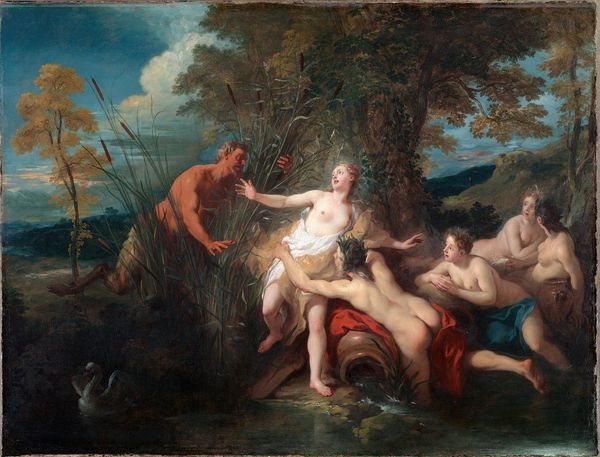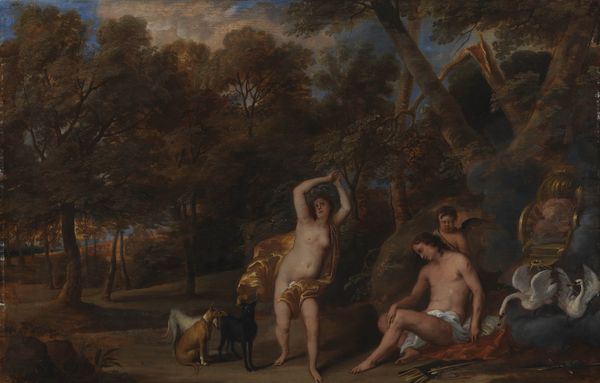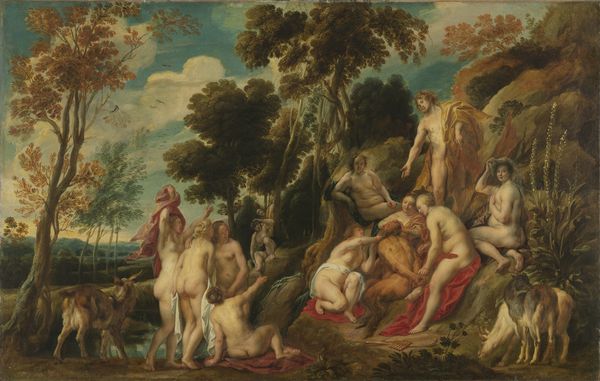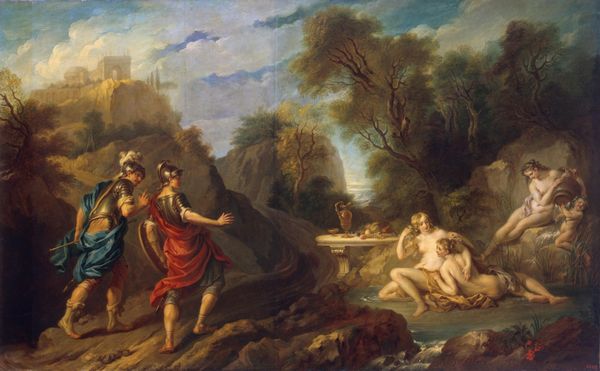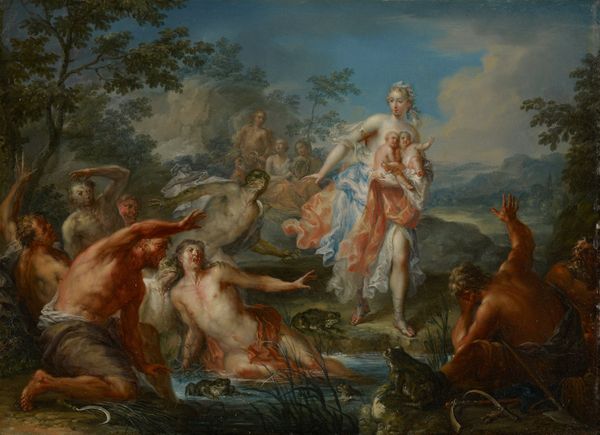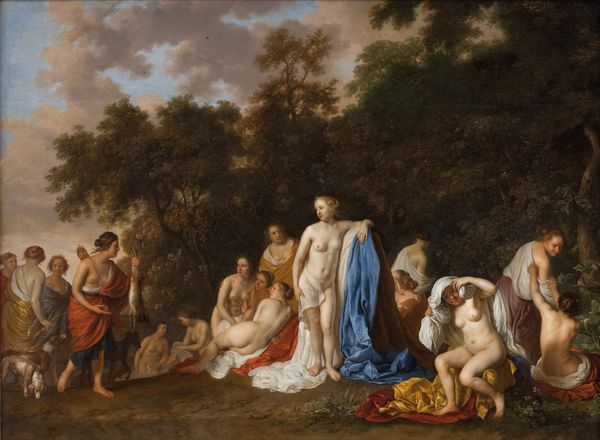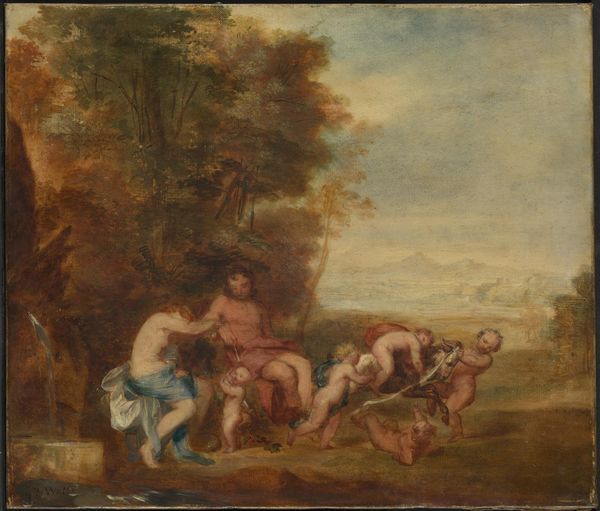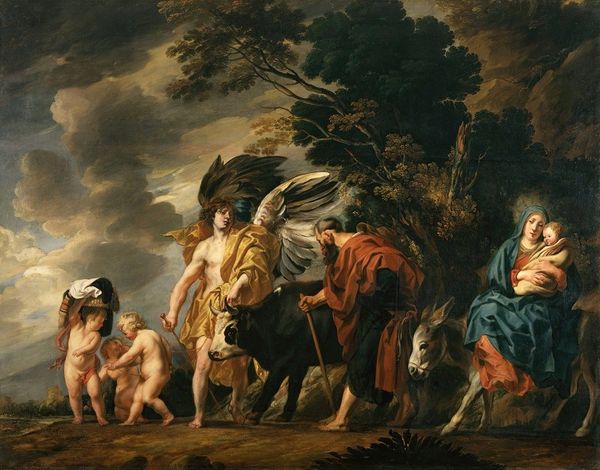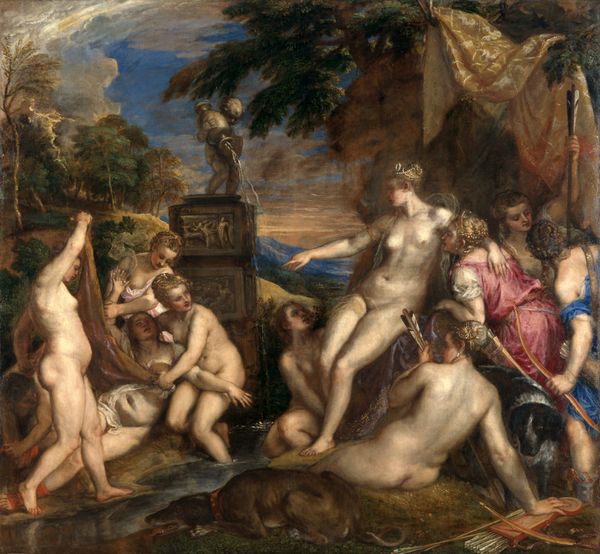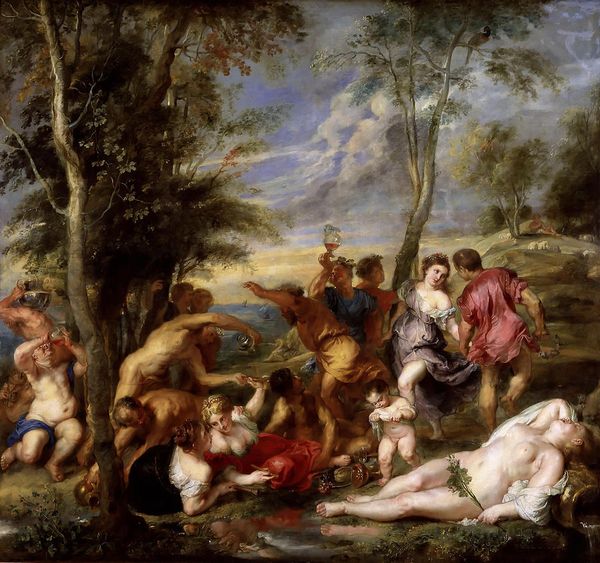
oil-paint
#
baroque
#
dutch-golden-age
#
oil-paint
#
landscape
#
figuration
#
oil painting
#
underpainting
#
mythology
#
history-painting
#
nude
Copyright: Public domain
Ferdinand Bol captured the moment Pharaoh’s daughter discovers Moses in the bulrushes in this painting. The act of finding a child adrift in water carries profound symbolism. We see echoes of this motif throughout history, from the myth of Romulus and Remus, suckled by a wolf after being abandoned on the river Tiber, to countless other stories of foundlings destined for greatness. It speaks to a universal narrative: the perilous journey, the hope for salvation, and the intervention of fate. The water becomes a symbol of both danger and purification. Consider how the emotional weight of abandonment and rescue resonates across cultures. The image of a vulnerable infant elicits a deep, subconscious response, triggering our innate sense of compassion and protection. This is how art engages us, not just visually, but on a primal, emotional level. The non-linear, cyclical progression of these symbols constantly resurfaces, evolves, and takes on new meanings in different historical contexts.
Comments
No comments
Be the first to comment and join the conversation on the ultimate creative platform.
